Adrian Collins's Blog, page 98
May 1, 2023
REVIEW: Dragonfall by L.R. Lam
Dragonfall, the first book in L.R Lam’s The Dragon Scale Trilogy, is a slow burn, full of angst, moral dilemmas and emotionally damaged characters. When it all comes together, it culminates in an exciting opening to a series with a lot of potential.
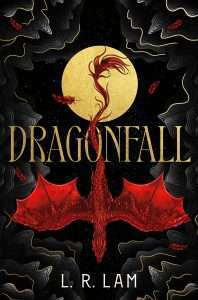 The premise for Dragonfall immediately grabbed me. We are introduced to a world in which dragons have been banished to a dark, dying home after being betrayed by humans. The twist? So much time has passed since this betrayal that humans now worship dragons as gods – even though their deities want nothing more than to return to the world and wreak a terrible revenge on humanity. If there’s one word to sum up the worlds depicted in Dragonfall, it’s bleak. On one hand, we have the dragons living in a world that is basically a smoking ruin, one volcanic eruption away from destruction. On the other hand, we have Lumet, the human nation where much of the story is based. Poverty is rife, the rich hoard magic and wealth, and the nation is still recovering after being devastated by a deadly plague called the Strike.
The premise for Dragonfall immediately grabbed me. We are introduced to a world in which dragons have been banished to a dark, dying home after being betrayed by humans. The twist? So much time has passed since this betrayal that humans now worship dragons as gods – even though their deities want nothing more than to return to the world and wreak a terrible revenge on humanity. If there’s one word to sum up the worlds depicted in Dragonfall, it’s bleak. On one hand, we have the dragons living in a world that is basically a smoking ruin, one volcanic eruption away from destruction. On the other hand, we have Lumet, the human nation where much of the story is based. Poverty is rife, the rich hoard magic and wealth, and the nation is still recovering after being devastated by a deadly plague called the Strike.
Our story starts with Everen, the last male dragon, being dragged through the Veil and into the human world in a misguided attempt to fulfill his destiny as his people’s great hope. There is a darkness to Everen, something that fans of Grimdark fantasy will admire. He was feted as the savior of the dragons before being shunned and ignored and seen as a failure for his inability to foresee the future. His mother is Queen but has never displayed any warmth towards Everen, something that fuels his all-encompassing desire to prove himself to his kind. The themes of legacy and destiny are constant throughout Dragonfall, and L.R Lam does a brilliant job of depicting how these looming concepts cause chaos within Everen and our other protagonist, Arcady.
If it was possible, Arcady lives an even bleaker life than Everen, suffering is a constant in her world. She grows up an orphan, making her living as a thief after suffering a horrendous event in her youth. The start of Dragonfall sees her stealing a powerful artifact from the body of the Plaguebringer, the most despised man in Lumet’s history, in an attempt to get revenge on the world that has wronged her. What she doesn’t realise is that her actions are the trigger to an even more significant event, with her spell dragging Everen through the Veil and into the human world.
Though Arcady doesn’t know it at first, she is now linked to Everen, who is told that the only way to bring his people back from the dying world is to strengthen and complete the bond between him and the human. This introduces us to the central conflict of Dragonfall. Everen grows closer to Arcady, the bond between the characters strengthening. They literally transform from enemies to close friends, something that is done in a very organic way. However, Everen knows the only way to save all of his people is to kill Arcady – but only after they have completed their bond. We see him struggle under the weight of this prophecy and L.R Lam does a good job of always reminding us what Everen has to lose.
Dragonfall is written in a world where everyone is suffering and death is a constant. Our characters are doing all they can to survive in that world but they face constant setbacks throughout the story. L.R Lam is a terrific writer and builds a vivid and lived-in world without too much info dumping. It’s clearly the first novel in the trilogy and does take a while to get going. However, it then picks up speed with the plot coming together in an exciting and dynamic way.
An aspect that didn’t quite work for me was the storyline involving Sorin, essentially a warrior acolyte under the thrall of a shadowy individual. I didn’t find her few chapters particularly engaging and thought her storyline just distracted from Everen and Arcady. I also felt her narrative ended in quite a predictable way and perhaps would have been helped by a few more chapters to really flesh out her characterisation.
I also struggled with the romance subplot. I thought it made a lot of sense and L.R Lam did a good job of not making it too contrived. Yet there were still moments where I found myself rushing through the scenes to try and get back to the main story. At the end of the day though, it comes down to a matter of preference. I can definitely see fans loving the romance, it just isn’t something that particularly appealed to me.
Overall, Dragonfall was a very entertaining read. It was immersive and engaging and stands as a very solid opener to the trilogy. L.R Lam does a great job of sprinkling hints of worldbuilding throughout the novel and I’m excited to read the next two books and see the stakes get bigger and the world more developed.
Four stars.
Read Dragonfall by L.R LamThe post REVIEW: Dragonfall by L.R. Lam appeared first on Grimdark Magazine.
April 30, 2023
REVIEW: Song of Silver, Flame Like Night by Amélie Wen Zhao
Song of Silver, Flame Like Night is the start of a new series by Amélie Wen Zhao. An epic story in the crossover territory between YA and adult fantasy, strongly influenced by Zhao’s Chinese background and multicultural upbringing and full of immersive prose, this will whisk you away and immerse you completely.
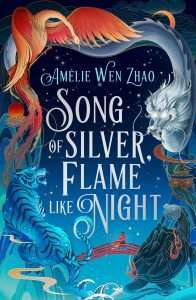 Both Lan and Zen, the main characters are outsiders in their community. Lan used to have a different name – one given to her by her mother – but now goes by what the Elantian colonizers named her. Zen has access to a magic believed to be lost, rumoured to be drawn from demons – and highly forbidden by the Elantians. And fate has brought them together when Zen saved Lan’s life…
Both Lan and Zen, the main characters are outsiders in their community. Lan used to have a different name – one given to her by her mother – but now goes by what the Elantian colonizers named her. Zen has access to a magic believed to be lost, rumoured to be drawn from demons – and highly forbidden by the Elantians. And fate has brought them together when Zen saved Lan’s life…
Set at the intersection of colonialization and cultural interaction, Song of Silver, Flame Like Night is about communication more than anything else. The two main characters are from very different backgrounds, both with secrets of their own to boot. Yes, this is a fantasy about magic, destiny and the power to end the world as they know it, but really, it’s about two people, navigating the difficulties posed by intercultural communication and secrets.
The prose is gorgeous, at times flowery, though broken by spry, emotional reactions from the characters that break through what might otherwise seem overwrought. That contrast allows the magic to work, to create an immersive world that draws the reader in, but keeps breaking its own spell, showing off the discordance the characters themselves experience. It doesn’t mean that the story and language flows less, it creates a sort of additional rhythm, one that isn’t quite as predictable and fits so well with the themes of identity and fitting into a place that isn’t truly your own. I love noticing details about prose that seem like parallels to plot and theme – it makes a work stand out so much. Having read the author’s Blood Heir previously, her growth is clear and I look forward to following along on her journey and seeing where it goes in the future. s
A fantasy novel full of forbidden magic, secrets and an oppressive colonial power, with secrets to navigate and a complicated balance to strike fits our parameters of Grimdark well. There are difficult moral decisions to be made aplenty and I found that this will have great appeal to readers of dark fantasy. It would also be a great choice for Grimdark loving parents to hand to their teens – indoctrinate them young and bring them to the (grim)dark side! As a whole, I really enjoyed Song of Silver, Flame Like Night and can’t wait to read the second book in the duology.
Read Song of Silver, Flame Like NightThe post REVIEW: Song of Silver, Flame Like Night by Amélie Wen Zhao appeared first on Grimdark Magazine.
April 29, 2023
REVIEW: Savage Bounty by Matt Wallace
In Savage Bounty by Matt Wallace the previously impenetrable physical and social walls of Crache are starting to look very shaky as the Savage rebellion gets louder outside and the troubles of the Planning Cadre and the Protectorate Ministry grow more fervent within. Book two of of the Savage Rebellion trilogy does not take its foot off the pedal, and if Savage Legion was right in your low / dark fantasy sweet spot, you are going to be very happy with where book two takes you.
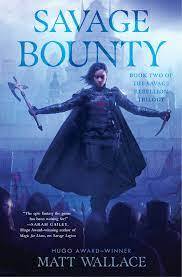 Leader of the renegade Savages, Evie sets siege to the Tenth City of Crache. Every assassin in Crache seems to have been sent to kill her, and every battle feels like it must be their last before failure, but she has a mission—to free the Savages and show the people of Crache what their leaders have done. Dyeawan sits at the head of the Planning Cadre, putting her significant intellect into both maintaining her majority leadership position in control of Crache, while also trying to manage and survive the internal political workings of her colleagues and foes. Lexi has survived assassinations and political manoeuvring, only to land in the dungeons of a secretive family who have spent a the last thousand years attempting to regain what they lost. Like Evie Before her, Taru finds herself thrown into the Savage Legion and sent to the front. Only her pressing into the Legion is far more involuntary.
Leader of the renegade Savages, Evie sets siege to the Tenth City of Crache. Every assassin in Crache seems to have been sent to kill her, and every battle feels like it must be their last before failure, but she has a mission—to free the Savages and show the people of Crache what their leaders have done. Dyeawan sits at the head of the Planning Cadre, putting her significant intellect into both maintaining her majority leadership position in control of Crache, while also trying to manage and survive the internal political workings of her colleagues and foes. Lexi has survived assassinations and political manoeuvring, only to land in the dungeons of a secretive family who have spent a the last thousand years attempting to regain what they lost. Like Evie Before her, Taru finds herself thrown into the Savage Legion and sent to the front. Only her pressing into the Legion is far more involuntary.
Wallace does a great job of escalating the conflicts created in Savage Legion and expanding on the world, while also setting us up for an exciting conclusion in book three. Getting to see more of the Planning Cadre’s inner workings and politics was enjoyable (and odd, at times!). The Protectorate Ministry just keep getting more and more comic book villainy–something I kind of enjoyed, for once–and I am really hoping that now Wallace has shown off the Savage Legion and the Planning Cadre, that we get to the see inside the ministry in book three. Savage Bounty does suffer from being more of a bridge between books one and three than a book that really holds its own, as I didn’t feel there was a beefy enough story arc that started and finished within its pages. However, it is of a short enough page count and reads at a fast pace, so you can treat it as such without heavy time investment or suffering world / story burn-out before jumping straight into book three.
Wallace was a little lighter handed in depicting the social themes of Savage Bounty than book one, trusting the reader a bit more to pick up on what was not written. Once again, diversity is a key theme, and I feel that the lighter hand used by the author made the conversations between characters regarding diversity feel more natural than they did in book one. There were also some excellent scenes with thoughtful commentary which would land with those interested in First Peoples and traditional land ownership–something that is a big topic in many ex/colonial countries, such as Australia (where I live).
For grimdark fantasy fans: once again we have very villanous villains which aren’t really going to scratch that nuanced antagonist itch we constantly chase, and this 2D nature was generally reflective of the non-Savage supporting cast. However, the POV characters are great fun to ride along with. Evie, Dyeawan, and Taru remain the three characters who captured me the most, with Lexi’s character seeming to run into the more ridiculous of villains taking away some of the enjoyment of her sections, for me.
Savage Bounty by Matt Wallace is an enjoyable book two in the Savage Rebellion trilogy, with explosive bloody action, dark political machinations, and engaging social commentary smoothly worked into a medieval fantasy world. I’m off to get straight into book three.
3/5
Read Savage Bounty by Matt WallaceThe post REVIEW: Savage Bounty by Matt Wallace appeared first on Grimdark Magazine.
April 28, 2023
REVIEW: The Mermaid’s Tale by D.G. Valdron
D.G. Valdron’s The Mermaid’s Tale merges familiar story elements like classical fantasy races and murder mystery plots and infuses them with philosophy and sociology to create something uniquely its own. A graphic and horrifying story of purity and corruption, the novel walks the line of visual stimulation and gratuitous gore without faltering. The book embodies one of its strongest themes: it is greater than the sum of its parts.
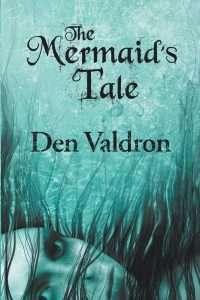 The Mermaid’s Tale centers on a city just as beautiful as it is dark. As different races wage war, the resolution lies within their political gambits, where the cost and collateral come in the form of their humanity. Amidst the shadows are the mermaids, the epitome of everything precious, innocent, and sacred. When one is brutally murdered, the Elders summon the most damned and lowly of all beasts to hunt the killer: an orc. Already fragile alliances fray as the city verges on the edge of collapse as all races must decide how well the end justifies the means.
The Mermaid’s Tale centers on a city just as beautiful as it is dark. As different races wage war, the resolution lies within their political gambits, where the cost and collateral come in the form of their humanity. Amidst the shadows are the mermaids, the epitome of everything precious, innocent, and sacred. When one is brutally murdered, the Elders summon the most damned and lowly of all beasts to hunt the killer: an orc. Already fragile alliances fray as the city verges on the edge of collapse as all races must decide how well the end justifies the means.
As opposed to focusing on the characters or the plot, The Mermaid’s Tale is thematically driven. From the notion of justice to the idea of being more than one thing, Valdron layers the exploration of these complex concepts into his world-building. Brilliantly executed, these themes are not only timeless, but presented in such a way without leading the reader to a specific outcome. Instead, Valdron shows you his world through the protagonist’s eyes, allowing you to draw your own conclusions.
Along with the themes, the other strength of The Mermaid’s Tale lies in its world-building. Valdron’s creativity shines as he combines elements that, on the surface, appear weird and mismatched. Yet, somehow, he stitches it all together seamlessly. Each society is not only well-thought-out, but works hand-in-hand with the heavy social science presence. Though not apparent at the start, the world is equally brutal for everyone living in it regardless of race, class, or gender. The way Valdron slowly reveals this over the course of the novel feeds into a larger angle about how we often focus on the separate parts of something, especially at the initial onset, rather than its full capability: “Perhaps we could be more than what we are” (422).
Some readers might experience a challenge with The Mermaid’s Tale in the form of the point-of-view. Though the novel is written in first-person, a certain distance is established between the reader and the protagonist. The separation helps when in difficult moments, but comes at the cost of character attachment. In the same vein, the character relationships are secondary to the thematic elements and the world-building, rendering them as less fleshed-out than some readers might prefer. However, Valdron is intentional and purposeful with his choices. His approach to his characterizations becomes abundantly clear once the story’s finished.
From the brutal violence and bleak world to the exploration of such themes like truth and justice, The Mermaid’s Tale is the definition of a grimdark story. The novel’s true essence is primally raw and unflinchingly honest. Valdron forces you to take a hard look at human behavior and the definition of “the right thing,” pushing your convictions until they break: “Foolish Rughk, to be the only real thing in an unreal world? Do you think that is why the rest of the world hates you so much?” (283). A tale not only worth telling, but one that shouldn’t be missed.
Read The Mermaid’s Tale by D.G. ValdronThe post REVIEW: The Mermaid’s Tale by D.G. Valdron appeared first on Grimdark Magazine.
April 27, 2023
An Interview With M.R. Carey
M.R. (Mike) Carey is the critically acclaimed author of over sixteen novels, including the USA Today bestseller The Girl with All the Gifts, which was adapted into a feature film starring Sennia Nanua and Glenn Close. Carey is also a prolific comic book writer for both D.C. and Marvel, including highly praised stints for the Marvel flagship series X-Men and Fantastic Four.
Carey’s latest novel is Infinity Gate, an action-packed multiverse sci-fi and the first entry in his new Pandominion series. We recently crossed paths in the same universe with Carey to bring you this interview on his new multiverse series and more.
 [GdM] Thank you for taking the time to do this interview with Grimdark Magazine. The multiverse has been popularized in a wide variety of books and movies, especially in recent years. How did you develop your unique take on the multiverse in Infinity Gate and your Pandominion series?
[GdM] Thank you for taking the time to do this interview with Grimdark Magazine. The multiverse has been popularized in a wide variety of books and movies, especially in recent years. How did you develop your unique take on the multiverse in Infinity Gate and your Pandominion series?
[MRC] I think one of the starting points was a short video Derek Muller did on his Veritasium Youtube channel. It was an explanation of the Schroedinger’s Cat thought experiment that brought in quantum entanglement and the many worlds hypothesis and it was mind-bending in a very good way. He was basically arguing that when you open the box you don’t collapse the wave form you just become entangled with that system – so now there are two versions of you, one where you find the cat alive and one where you find it dead.
I started thinking about how you might try to map a reality that keeps splitting like that, and I ended up doing a crazy little doodle that became a schematic diagram of the Pandominion, the multiversal empire from Infinity Gate. The story grew out of the map, which is an awkward thing for me to admit. I generally hate novels that have maps at the front. Well, except for The Lord Of the Rings. And Earthsea. And Naomi Novik’s Scholomance books. Actually, I guess it depends on the map.
[GdM] Much of the action in Infinity Gate occurs in Lagos, in both the Nigeria of our own world and in parallel worlds that have experienced very different evolutionary and political histories. It is a joy to follow your protagonist, Dr. Hadiz Tambuwal, as she makes the most important discovery in modern physics. Could you tell us about how you chose Lagos as the focal point for the novel and how you developed Hadiz as a character? More broadly, what do you think should be done to help improve diverse representation across the sci-fi genre?
[MRC] That’s a very big question. And taking the last part of it first, you can’t have diverse fictions unless you have diverse writers. So I guess if you’re a publisher the first thing you do is publish diverse voices. Which probably means you need to make sure that your gatekeepers, your commissioning editors, form as diverse a team as you can get. If they’re all from the same background then with the best will in the world they’re probably not going to be able to build you a list that’s as wide in terms of its cultural reference points as you would want.
At which point I have to point out the obvious, which is that I’m as white as the paper I write on. So why Lagos? I think the short answer is because Britain. Because I come from a country that was one of the world’s biggest imperial powers and at its height ruled over almost a quarter of the world’s land area and a quarter of the world’s population. And there are still people in the UK who are nostalgic for that power, for the status we used to have on the world stage. There are still people who whitewash what we did and try to argue that the British empire was a force for good.
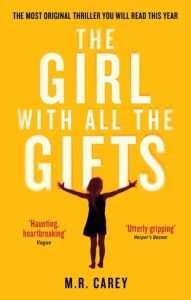 Infinity Gate is partly a story about empire, so it made sense to me to choose a setting that gives the lie to that nostalgic imperial myth. The British weren’t in control in Nigeria for very long – just a decade in fact – but we did a lot of damage in that time and we left a poisonous legacy. Arguably the military coups and the ruinous civil war that followed British rule were a direct result of the structures we misguidedly built before we left. I’m thinking especially of the imbalances we deliberately created when we divided the country up into three sized regions with very unequal representation in the national assembly.
Infinity Gate is partly a story about empire, so it made sense to me to choose a setting that gives the lie to that nostalgic imperial myth. The British weren’t in control in Nigeria for very long – just a decade in fact – but we did a lot of damage in that time and we left a poisonous legacy. Arguably the military coups and the ruinous civil war that followed British rule were a direct result of the structures we misguidedly built before we left. I’m thinking especially of the imbalances we deliberately created when we divided the country up into three sized regions with very unequal representation in the national assembly.
It was a lot to take on, and I was more than a little afraid that I might not be up to the job. I read a lot of histories and a fair amount of Nigerian fiction, but that will only take you so far. I also had the temerity to ask Tade Thomson if he knew anyone who might be willing to give the book a sensitivity read when it was finished. With incredible generosity Tade offered to take on that task himself, and his advice was invaluable throughout. I’m not saying there are no egregious errors in the book, but the ones that are there are all mine and they’re there in spite of Tade’s help. Really, I couldn’t have done it without him.
And that extends to the characters, especially Hadiz. I had a vivid sense of her from very early on, but Tade’s feedback helped me to locate her in a cultural landscape. In some ways – for example her relative isolation from her extended family – she stands some way out of the mainstream of Nigerian culture. But I think that’s okay. There are always cross-currents in these things and no culture is a monolithic bloc. And Hadiz is a character defined by extremes. I like that she’s at the end of the bell curve in so many ways.
[GdM] Infinity Gate does an excellent job considering the intertwining political and economic implications a multiverse that has a potentially limitless supply of natural resources. How did you work through these political and economic aspects of worldbuilding?
[MRC] Well thank you, that’s kind of you to say. That was one of the starting points, really. So many of our world’s problems are problems that come back to scarcity or unequal distribution. And in a wider sense the logic of capitalism depends on endless growth, which is obviously impossible in a finite world. But what happens if the limits are removed and the available resources are infinite? Do you automatically have benevolence and wealth equality? No, of course you don’t. You just shift your mechanisms of control to accommodate the changed circumstances. Because control is really the point, for any system of government, and it becomes its own rationale for anything and everything.
[GdM] Infinity Gate is (more than) universal in scope, but it feels very personal in the relationships that it portrays between people and AI, where the roles of AI include professional assistant, personal friend, and arch enemy posing an existential threat to organic life. How do you see these various roles of AI evolving in our world? Do you anticipate a situation where AI would qualify for personhood?
[MRC] I was reading an article on exactly this topic a few weeks back. A journalist circulated a questionnaire to cyberneticists – people who are training the current generation of AIs. The key question was: can an AI trained only on text ever reach true sentience? The answers split more or less 50/50. Half said yes, half said no. And these are the experts, the people who are refining ChatGPT and MidJourney and all those other systems. They don’t know. So I think it’s fair to say that we, humans in the aggregate, have no clue what we’re making right now.
And the answer might always be that – a shrug or a coin-toss. The Turing test has fallen by the wayside and we didn’t even see it go. Over the next few years we’re going to see AIs that can innovate, that can solve complex problems in real time more efficiently than most people. We’re also going to have AIs training AIs, taking the whole process even further out of our direct control. We’ll be interacting with AIs whose responses are hugely, wholly indicative of sentience. And it will come down to an abstract argument about the algorithms they’re running. To use the words of a character in Infinity Gate, do they think or do they only think they think? It’s going to matter a lot, very soon, and there won’t be any agreement. There’ll only be best guess.
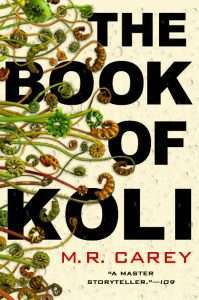 [GdM] One of the main protagonists in Infinity Gate is Paz, who hails from an alternate Earth where rabbits have become the dominant sentient species. How did you decide on rabbits instead of a different type of animal?
[GdM] One of the main protagonists in Infinity Gate is Paz, who hails from an alternate Earth where rabbits have become the dominant sentient species. How did you decide on rabbits instead of a different type of animal?
[MRC] I wanted Paz to be a herbivore, someone peaceable and civilized and very easy to underestimate. I like the idea of a culture built on rabbit values, on the importance of the burrow and on running away from danger. I also liked the idea of taking someone from that culture and revealing her inner bad-ass. Some of my favourite scenes were the ones where Paz was up against the wall and she took charge in unexpected ways. She was crazy fun to write.
[GdM] You are particularly adept at introducing complex scientific concepts in a manner that is easily accessible for the reader. What was your approach for conveying these topics in such a natural fashion?
[MRC] Again, thanks! I did it because I had to. There are a lot of points in the story where scientific concepts are part of the story engine, so I had to find ways of dramatizing them – of making them compelling on the page. A lot of it comes down to point of view. When Hadiz discovers Step travel we’re seeing it through her eyes, as a puzzle she urgently needs to solve – a personal crisis that could be the key to her world’s deliverance. So the stakes are high and the abstract (I hope) becomes that bit more concrete. We need to know what Hadiz has found and what she’s going to do with it.
There’s a similar thing in the second book with the Robust Rebuke, the Pandominion’s doomsday device. We’re with the scientists who are researching the thing and the bureaucrats who will decide how it’s used – and we’re seeing what the potential consequences are for organic life across the whole multiverse. The focus is on the implementation of scientific discoveries in fraught, imperfect societies.
[GdM] What were some of your inspirations for Infinity Gate outside of the multiverse subgenre?
[MRC] I think it’s a space opera as much as it’s an alternate worlds story, so it’s got that in its DNA. The first “clash of mighty spacefaring empires” story I read, way back in the late 60s, was the Lensman series by E.E.Smith, which was enthralling and deeply questionable in about equal measures. I suspect it’s lurking there in the middle distance. And maybe Watership Down is too. I had to get my rabbit epic mode from somewhere. Generally though, I think the writer is the last person to ask about their influences. Everything you read gets mulched down into a substrate and most of the time you don’t even know what you’re stealing from.
[GdM] The ending of Infinity Gate left us eager to see what happens next. Is there anything you can share about the next installment of the Pandominion series? How many books are planned in total?
[MRC] Only two – although I might go back in to tell other stories. Echo Of Worlds wraps up the story of the Ansurrection war and the unidentified narrator’s journey towards sentience. It brings the Mother Mass onstage, and it drags back at least one character who we were probably happy to think was dead. Oh, and it gives Dulcie a new shell. Those are all the spoilers I want to give right now. But the general aim was to tell a single story across two books – about 300,000 words, which felt too short for a trilogy but too big for one huge tome.
[GdM] The Girl with All the Gifts translated beautifully to the big screen while remaining faithful to the source material. Was there any pressure to diverge from the original story? What is it like to see your stories on television or the big screen?
[MRC] Well in the case of The Girl With All the Gifts it was wonderful. That whole experience remains one of the most amazing things that’s ever happened to me. It was also one of the strangest, because I was working on the novel and the screenplay at the same time. I was totally immersed in that world.
And then when we started the shoot I was invited on-set, which felt like a huge privilege. I got to meet the actors, to see the movie taking shape, even in a few cases to do some last-minute dialogue tweaks. A movie has a much longer gestation period than a novel, so some of the later scenes in the film represented second thoughts I’d had after handing in the last draft of the novel. That’s particularly true of the final confrontation between Melanie and Dr Caldwell. In the book Caldwell just dies at that point. In the movie she’s made to confront her own mistakes first, and I think that works better.
We did diverge from the novel, but it wasn’t because of external pressures. It was because novels aren’t movies. When you adapt, you use the toolkit that works in the new medium. So for example we ditched the multiple points of view and stayed with Melanie throughout. We discover her world through her eyes, which felt like the right call in such a very visual medium.
[GdM] I am a longtime fan of your graphic novels and have been reading your work since Hellblazer, Lucifer, and The Unwritten. Is creating a story for a comic or graphic novel completely different than creating one for a full-length novel?
[MRC] Yeah, very different. Comics are unique in that they’re serialized narratives crafted in real time. When you’re working on an ongoing comic series you’ve got a general sense of where you’re aiming for but you’re crafting it as you go, one little piece at a time. That leads to a strange combination of planning and serendipity. A lot of things get drawn into the mix that you didn’t foresee when you were going in. An example of that would be the character of Gaudium in Lucifer – or Mr Bun in The Unwritten. In both cases we had a character we thought was kind of a single serving, with Gaudium having a messenger function and Mr Bun coming to a horrific end in a done-in-one short. But then I got fascinated with the characters and kept revisiting them. I blame Peter Gross for that. He made them live and breathe, and I couldn’t ignore them after that.
[GdM] Did your career as an educator help you when you transitioned to comic writing?
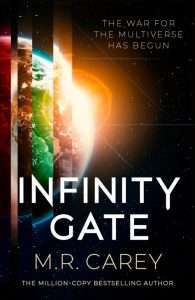 [MRC] Only in the sense that I was used to working very long hours without a break. Teaching was hard. In term-time you’d basically work every evening and most weekends. In theory you had non-contact time during the working day, but in practice whenever you weren’t teaching you were usually in meetings or covering for sick colleagues . It was full-on. So evenings and weekends were when you did marking and lesson prep, and it never really stopped. I loved teaching, but nothing I’ve done since has been remotely as hard as that.
[MRC] Only in the sense that I was used to working very long hours without a break. Teaching was hard. In term-time you’d basically work every evening and most weekends. In theory you had non-contact time during the working day, but in practice whenever you weren’t teaching you were usually in meetings or covering for sick colleagues . It was full-on. So evenings and weekends were when you did marking and lesson prep, and it never really stopped. I loved teaching, but nothing I’ve done since has been remotely as hard as that.
Shelly Bond, my editor on Lucifer, said you could usually tell the writers who’d done the 9 to 5 from the ones that hadn’t. It didn’t really matter what the job was, it was just the nose-to-the-grindstone mentality. In that sense it helped. It gave me a useful mind-set.
[GdM] You wrote The House of War and Witness with your wife Linda and daughter Louise as co-writers. How did you handle working together as a team? Did you split off sections? Or, discuss everything as a whole?
[MRC] A bit of both. We did all the planning together, over a very long period of time. We might never have got to the actual writing if we hadn’t unexpectedly got the book commissioned. Once that happened we started writing sample passages to get the narrative voice right, trying to triangulate on a style that worked for all three of us. And then we divided up the story more or less along character lines. Each of us had characters we really wanted to write and we sort of took charge of those. It worked surprisingly well, but it took three times as long as it would have done if any of the three of us had been working alone!
It was great, though. It was one of those experiences that changes you, even more than you know. Coming out of that collaboration I was in a very different place – and I immediately wrote The Girl With All the Gifts, which I think is very much inflected by the fact that I’d just spent two years co-writing with two women.
[GdM]How do you choose when to write under M.R. Carey versus Mike Carey?
[MRC] Well M.R.Carey was kind of an accident. The idea was to publish The Girl With All the Gifts under a pseudonym, but to make it an obvious, transparent pseudonym – like with Iain Banks and Iain M. Banks. And the thinking behind that was all about initial orders. My editors at Orbit felt that GIRL had the potential to reach a much wider audience than the Castor novels, and they thought it would help to just put up a discreet little screen door between them. And I have to admit that it worked. GIRL sold really strongly. Which then meant that going forward Orbit were much more interested in publishing M.R.Carey than Mike. All my prose work since has been by M.R. My comics work is by Mike because I’ve never been anyone else in that context. And when I do screenwriting I toss a coin.
[GdM] Do you think that you will revisit the world of Felix Castor?
[MRC] I just did! After years of saying I was going to go back in and wrap that story up, I have a Castor Novella coming out from Subterranean very shortly. It’s called The Ghost In Bone, and although it doesn’t resolve everything that’s still pending in Castor’s world it does bring us back to the big mystery of why the dead began to rise when they did and why that tide of resurrection seems to be changing as we watch. So it brings the big resolution one step closer.
[GdM] What other projects are you currently working on beyond the Pandominion series?
[MRC] I’ve gone back into comics recently after a hiatus of a few years. I’ve done a couple of shorts for Bad Idea and I’m working on a miniseries with them. I’m also doing a book for Comixology. And I’ve got a couple of movie projects in progress with Colm McCarthy and Camille Gatin, the director and producer of The Girl With All the Gifts – one of which is an adaptation of the Neil Gaiman graphic novel Violent Cases. That’s been insane amounts of fun to work on.
And there’s one more novel in the works, tentatively called I Will Tell You Seven, which is a take on the Seven Samurai if the seven were all undead monsters of one sort or another.
After that I might take a day or two off.
Interview by John C. Mauro and Beth Tabler
Read Infinity Gate by M.R. CareyThe post An Interview With M.R. Carey appeared first on Grimdark Magazine.
April 26, 2023
REVIEW: Ascension by Nicholas Binge
Ascension by Nicholas Binge is an epistolary novel where well-respected physicist, Harry Tunmore, documents the investigation of the scientific team he is a part of, who are exploring the bizarre appearance of a giant mountain that has formed in the middle of the Pacific Ocean.
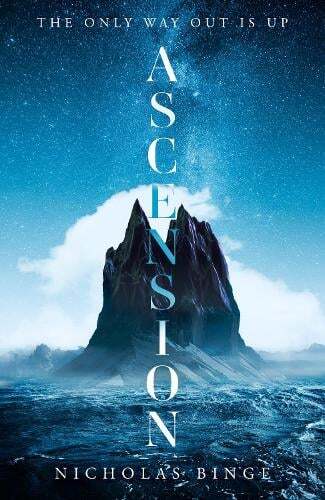 Although immensely bright and talented, Harry is a loner who has isolated himself from family, friends, and loved ones. This self-inflicted penance has allowed Harry to excel in his scientific field, travelling the world, building his reputation, and leading him to be respected enough to be a part of this exploration team. He has hardened his heart when it comes to feeling and emotions.
Although immensely bright and talented, Harry is a loner who has isolated himself from family, friends, and loved ones. This self-inflicted penance has allowed Harry to excel in his scientific field, travelling the world, building his reputation, and leading him to be respected enough to be a part of this exploration team. He has hardened his heart when it comes to feeling and emotions.
This makes it slightly surprising that he writes the letters expressing the strange and beyond comprehensible happenings on the mountain to his niece, Harriet. The letters act as chapters and occasionally feature editor’s notes which usually reference the letters’ dates or conditions (how worn etc…), adding an extra layer to the peculiarities that take place on the mountain.
“IF YOU EVER READ THIS. TELL OTHERS. DON’T COME HERE.”
The above statements were on the advanced review copy I received for this novel and intrigued me enough to start reading straight away. Ascension gripped me from the moment I started reading, and, throughout, is a high-octane, science-fiction thriller, littered with intelligent and dynamic set-pieces. Approximately 70% of the novel takes place on the mountain yet this narrative never becomes dull or predictable.
 Binge writes well, with real clarity as he brings the drama to life, set against this almost otherworldly backdrop. Some sections of Ascension are science-heavy, relating to and referencing many theories that are far too advanced for my understanding. This did not take away from my enjoyment, and, if anything, heightened my empathy for the characters as they, some of the cleverest minds on the planet, were left baffled by the unexplainable.
Binge writes well, with real clarity as he brings the drama to life, set against this almost otherworldly backdrop. Some sections of Ascension are science-heavy, relating to and referencing many theories that are far too advanced for my understanding. This did not take away from my enjoyment, and, if anything, heightened my empathy for the characters as they, some of the cleverest minds on the planet, were left baffled by the unexplainable.
Ascension features some excellent character creations and these are brought to life by Harry’s descriptions and impressions regarding personalities and motives. High-intensity adventurer Bettan and military affiliate The Warden are great supporting characters, as is the scientist Naoko, whose path with Harry has crossed prior to them being reacquainted on the mountain.
Around 20% of Ascension is comprised of flashbacks and although I did not enjoy these as much as the scenes set around investigating the mountain, they are a welcome change in pace and culminate excellently (although slightly predictably); shedding light on the reasons for Harry’s isolation and almost stoic nature. These past events are normally revealed to coincide with an update that occurs on the mountain and feature knowledge-nuggets that enhanced the main story timeline. For example, indicating why he is writing to Harriet, and explaining the relationship situations with other members of his family.
Ascension is a stimulating and hard-to-put-down 300-page science thriller. It is complex, clever, thought-provoking, and thoroughly intriguing, with some fascinating concepts with regards to time and predicting the future, and our understanding of humans, nature, and the universe. 8/10.
READ ASCENSION: A NOVEL BY NICHOLAS BINGEThe post REVIEW: Ascension by Nicholas Binge appeared first on Grimdark Magazine.
April 25, 2023
REVIEW: The Lost War by Justin Lee Anderson
I have to be honest. When I first began The Lost War by Justin Lee Anderson, I almost immediately had a disconnect with it. Couldn’t get into it. Didn’t care about the setting, the characters, or their imperatives. I was frustrated that all the most interesting parts of the book were references to something that happened before the story even began, and the seemingly heavy handed way that the world was just a version of ancient Britannia viewed through a fantastical lens. The Lost World and I were at odds from the jump, but for it I broke my steadfast “three chapters” rule and doggedly persisted—largely because the chapters were so short and finished so briskly.
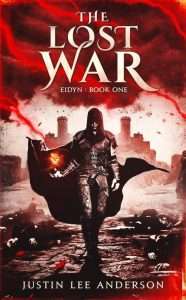 I am glad, damn glad, that I stuck with it.
I am glad, damn glad, that I stuck with it.
Anderson’s The Lost War is a very good book with moments of excellence. It certainly has its failings, largely that it at times is predictable and adhered to a number of established tropes, but once the story hits its stride it is a relentless adventure that managed to get its hooks in me and not let go. Much more story driven than character driven, the bulk of The Lost War concerns itself with being fleshed out by its characters who fall into tried and true archetypes, who themselves offer a number of perspectives. The cynical wizard (excuse me, draoidh). The hopeful ranger. The steadfast and virtuous paladin. There are others but for the most part, thankfully, Anderson doesn’t try to jump around too terribly much between characters unless it serves a purpose such as offering up a necessary insight.
Perhaps the greatest accomplishment of Anderson’s with The Lost War is taking what seems like a simple “disparate group of adventurers must get over their differences to go on a quest and save the kingdom” formula and turn it into something more. So much more. It is still that quest, but The Lost War layers intrigue and subterfuge and a surprising amount of cleverness in its plot that by the final chapters had me racing to turn the page and find out what happened next. Even more remarkably, I went from not caring much for most the characters or making a reasonable connection with them to genuinely wanting to know more about them and see more of them. Unfortunately, most my favorite characters were either secondary or introduced later in the story, but thankfully The Lost War is only the first book of a series and hopefully I’ll get to see more of my favorites in the sequel.
All in all, The Lost War established itself as a solid, fast-paced adventure that straddled a comfortable line between tried and true fantasy tropes and intriguing unique elements to become a book I immensely enjoyed, and hope to have the follow-up in my hands as soon as possible.
Read The Lost War by Justin Lee AndersonThe post REVIEW: The Lost War by Justin Lee Anderson appeared first on Grimdark Magazine.
April 24, 2023
REVIEW: Legacy of Brick and Bone by Krystle Matar
Krystle Matar’s debut, Legacy of the Brightwash was massive, earning well-deserved praise and becoming one of the top finalists for the seventh Self-Published Fantasy Blog-Off. It was dark, complicated, and human.
 Legacy of the Brightwash was a murder mystery around an amputated girl found drowned in the Brightwash. The protagonist, Tashué, was a war hero turned Authority, the police force that deals with Tainted—those with magic powers. It took its time in settling you into the rhythms of the main city, introducing the large cast, and letting the characterizations deepen.
Legacy of the Brightwash was a murder mystery around an amputated girl found drowned in the Brightwash. The protagonist, Tashué, was a war hero turned Authority, the police force that deals with Tainted—those with magic powers. It took its time in settling you into the rhythms of the main city, introducing the large cast, and letting the characterizations deepen.
At the beginning of Legacy of Brick and Bone, that mystery has been unraveled. I won’t spoil what the mystery is for those who haven’t read the first book, but that answer alone is one of the grimmest things I’ve ever read. Tashué knows what’s happening, but he doesn’t have proof, either for court or the court of public opinion. And the people trying to keep the secret know that he knows, and need to act fast before Tashué can provide that proof.
Legacy of Brick and Bone doesn’t focus as intently on Tashué as its predecessor did. He still gets plenty to do, but he’s one of many. Much of his arc is confronting his own complicity with the Authority. Secondary characters from the first book get more of an active role—in particular, Ishmael Saeati, the diplomat and former lover of Tashué, Lorne, the boxer romantically involved with Tashué’s incarcerated son, Illea Winter, the political mastermind, and Stella Whiterock, now on the run with her daughter.
Stella has by far the most straightforward character arc in the story, as she, with a few allies, escapes the city of Yaelsmuir to find a new life somewhere else while being pursued. This section, being on the run in the wilderness, felt detached from the political machinations of much of the rest of the plot, but it was a welcome change of pace, and I found these to be my favorite sections of the book.
The political machinations are excellent in Legacy of Brick and Bone. Despite a large cast, every character is recognizable quickly and their motivations are understandable. The histories of each major player and how it affects them is exceptionally detailed and thought out. It’s complex without becoming convoluted. It feels real.
Much of the plot involves Tashué and Ishmael trying to find a way to rescue Tashué’s son, in jail for refusing to register as Tainted, while also trying to prevent the crisis coming to Yaelsmuir from coming to fruition. To this end, the only people who can protect them are Iwan Powell, the ruthless leader who runs Cattle Bone Bay, and Davik Kaine, the upstart smuggler who wants Powell’s job. The two attempt manipulate Tashué and Ishmael into doing their dirty work for them.
Matar uses the gaslamp setting to its fullest potential. The rise of pugilism ties in with the use of sports as ways to further political agendas. Those political agendas tie in with the rise of democracy, but still very much powerful people trying to gain more, and some of the underhanded tactics regarding the election wouldn’t be out of place today. There’s also the use of the printing press for propaganda. And the writing is detailed enough that the various districts of Yaelsmuir all come alive with their own flavours.
Legacy of Brick and Bone takes the same detailed and methodical worldbuilding and characterization of Legacy of the Brightwash, but the plot starts at a boil and stays that way throughout. Much like the first one, the threats cannot simply be ended by applying violence to the correct people, even if some are very deserving. The issues at stake are societal, and require societal change. It’s a superlative book, and it deserves as many accolades as the first.
Read Legacy of Brick and Bone by Krystle MatarThe post REVIEW: Legacy of Brick and Bone by Krystle Matar appeared first on Grimdark Magazine.
April 23, 2023
REVIEW: Cold Sleep by Luke Hindmarsh
I’m a huge fan of Luke Hindmarsh’s Mercury’s Son and 3:33. He’s an underrated science fiction and horror writer which get combined here for an especially good story. He’s so far only done standalones and I don’t think that’s going to change with this series but I’d like to see him take a crack at a series. Either way, I’m glad he sent me a copy of an ARC because I really enjoyed reading this from cover to cover in two days.
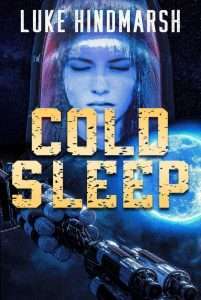 The premise is that Kara is a somewhat sociopathic navigator onboard a sleeper ship that is heading to a colony in order to spread humanity out among the stars. Kara and her boyfriend, Zed, are professional criminals that are planning on robbing a corporate bigwig while he’s asleep. Kara thinks this will get her promoted to captain or owner of her own ship while Zed rather stupidly thinks she’s planning on settling down with him.
The premise is that Kara is a somewhat sociopathic navigator onboard a sleeper ship that is heading to a colony in order to spread humanity out among the stars. Kara and her boyfriend, Zed, are professional criminals that are planning on robbing a corporate bigwig while he’s asleep. Kara thinks this will get her promoted to captain or owner of her own ship while Zed rather stupidly thinks she’s planning on settling down with him.
What follows will be familiar to anyone who is fan of the classic video game System Shock or System Shock 2 as their decision to upload a virus they were assured would be harmless proves to be the apparent stupid decision it was. Horrific changes are reported in the nanotechnology upgrades of their highest level passengers and things just get continuously worse. I’d also say it reminded me of Dead Space but since that game was inspired by System Shock, it feels a bit redundant.
At its simplest, Cold Sleep is a sci-fi zombie book. That doesn’t mean it’s not incredibly entertaining for what it is, though. The heart of every horror movie is whether you care for the characters involved and Luke Hindmarsh is extremely good at developing his doomed characters. Kara, the star, is ironically the most unlikable as she’s the kind of person who would be a villain in your typical cyberpunk story. However, that makes her a refreshing change as one of her earliest actions shows that she’s willing to do just about anything to survive. It makes her unpredictable and helps elevate the story’s content beyond the cliche.
Luke Hindmarsh also makes some interesting sci-fi exploration of concepts like AI, hive minds, transhumanism, and other issues you wouldn’t think would get touched on. At the end of the day, it’s still about making cybernetic monsters out to kill or assimilate the passengers like the Borg but it’s a far smarter book than it had to be. This intelligent thinking through of the implications makes it function as both a science fiction as well as a horror novel, helping the book be more than the sum of its parts.
If I had one issue with the book, it’s the fact that the author chose to write Cold Sleep in the present tense. Given Charles Dickens wrote in the present tense and the Hunger Games, this isn’t a bad thing but initially threw me. I can understand why the author did so, though, because that provides a sense of unpredictability to the events going on as they happen. It also influences the end that I feel was very strong and I won’t spoil in the slightest.
In conclusion, Cold Sleep is another great addition to Luke Hindmarsh’s library and an excellent horror lit story from Crossroad Press. If you like survival horror, this is an “adult read” for things like Resident Evil or Silent Hill IN SPACE. The characters are likable, the world-building consistent, and the concepts are interesting. If it’s not a 5/5 and classic of literature, it’s certainly a 4.5/5 with no complaints.
Read Cold Sleep by Luke HindmarshThe post REVIEW: Cold Sleep by Luke Hindmarsh appeared first on Grimdark Magazine.
April 22, 2023
REVIEW: Diablo IV
Here at Grimdark Magazine, a lucky few of us obtained Early Access to the highly anticipated Diablo IV, Blizzard Entertainment’s latest instalment in their phenomenally successful Diablo video game franchise. Initial Early Access was granted on March 17th-19th, with a fully public Open Beta occurring the following weekend (24th-26th). Being fortunate enough to play across both weekends, I’m pleased to report that I’ve been very excited by what I’ve seen so far.
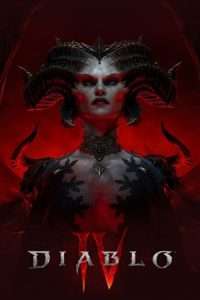 Thirty years after the events of Diablo III—where the Eternal Conflict between the High Heavens and Burning Hells has left humanity scrabbling to rebuild their lives in the dirt—a legendary name emerges: Lilith, Daughter of Hatred, Creator of Sanctuary and Our Blessed Mother. Once banished to the void by her angel lover Inarius for slaughtering both angels and demons to protect their Nephalem offspring, Lilith has been summoned once more to Sanctuary: to reclaim her power, enthral the hearts of humankind, and consume the world with hatred.
Thirty years after the events of Diablo III—where the Eternal Conflict between the High Heavens and Burning Hells has left humanity scrabbling to rebuild their lives in the dirt—a legendary name emerges: Lilith, Daughter of Hatred, Creator of Sanctuary and Our Blessed Mother. Once banished to the void by her angel lover Inarius for slaughtering both angels and demons to protect their Nephalem offspring, Lilith has been summoned once more to Sanctuary: to reclaim her power, enthral the hearts of humankind, and consume the world with hatred.
The nature of Diablo’s hack-and-slash, dungeon-crawling gameplay has always been an addictive one. Diablo IV is no different. Although there’s absolutely nothing new in this category for veteran players (except a few extra moves such as climbing walls and sliding down slopes), truthfully, there’s only joy in that familiarity.
Meanwhile, players for whom Diablo IV will be their first foray into Sanctuary will have absolutely no problems getting sucked in along with the rest of us. The storyline is nebulous and tropey enough to be almost completely ignored in favour of having enormous fun: completing side quests, plundering dungeons, levelling up and laying waste to your literal legions of hellish enemies.
Overall, my main impression is how visually stunning everything is. The opening cut scene is brutal, gory and deliciously creepy, and there is a very a real sense of bleak, desolate hopelessness clinging to the environments you’re exploring. Tonally, Diablo IV feels reminiscent of Diablo II (and for those who relish a little gore and evil in their fantasy worlds, this is a very good thing). Character customisations have also been greatly improved upon, with players having far greater control over the appearance of their favourite weapons and armour without having to pay too terrible a price. I loved having my character look so fashionably fierce early doors without being forced to trade off aesthetics in favour of keeping my buffs.
Early Access players were given the entirety of Act 1 to play on maximum difficulty of World Tier II (Veteran), although we could only initially choose from 3 of the 5 available classes: Barbarian; Sorcerer and Rogue. Druid and Necromancer became available during the Open Access weekend.
Between us, my partner and I managed to test out all but the bear-shifting Druid, although Grimdark Magazine’s Adrian chose Druid on his playthrough and confirmed they were a lot of fun. Of the five classes, the Sorcerer—a ranged attacker—was my personal favourite, especially when paired with the melee Barbarian, which made for varied and challenging gameplay.
Sadly, the skeleton-raising Necromancer is ridiculously overpowered, to the point my partner and I were able to leave the game running for an hour on top of a world event where enemies were constantly spawning. Whilst we ate our dinner, our characters remained alive, completely unharmed and protected by my partner’s Necromancer skeleton army. Without having to lift a finger ourselves, we returned to a pile of steaming corpses in the snow. It is my sincere hope the Necromancer class gets nerfed in time for the full release in June, along with the excessive item and coin accumulation system, which left us both feeling pretty god-like far too early on.
As expected with Early Access experiences, there were multiple benefits and drawbacks to the testing weekends. For example, players could earn the Beta Wolf Pack Cosmetic Items, to be accessed upon Diablo IV’s release, if their characters successfully reached Level 20 (all characters maxed out at Level 25).
However, many players were unable to fight certain co-op bosses or participate in featured global events due to server lag issues. Incidentally, it is a source of great frustration that Blizzard continues to insist that players must be permanently connected to their Battle.net account—particularly for those with patchy internet connection, or when Blizzard’s servers crash or are overloaded (which they did multiple times during the beta period).
In conclusion, Diablo IV has all the makings of yet another tour-de-force instalment of the franchise. I know I certainly spent much of the layover between testing weekends itching to get stuck back in, and ever since the Open Beta period ended, all I’ve wanted to do is play more of it. Simply put: 6th June 2023 cannot come soon enough.
Play Diablo IVThe post REVIEW: Diablo IV appeared first on Grimdark Magazine.



